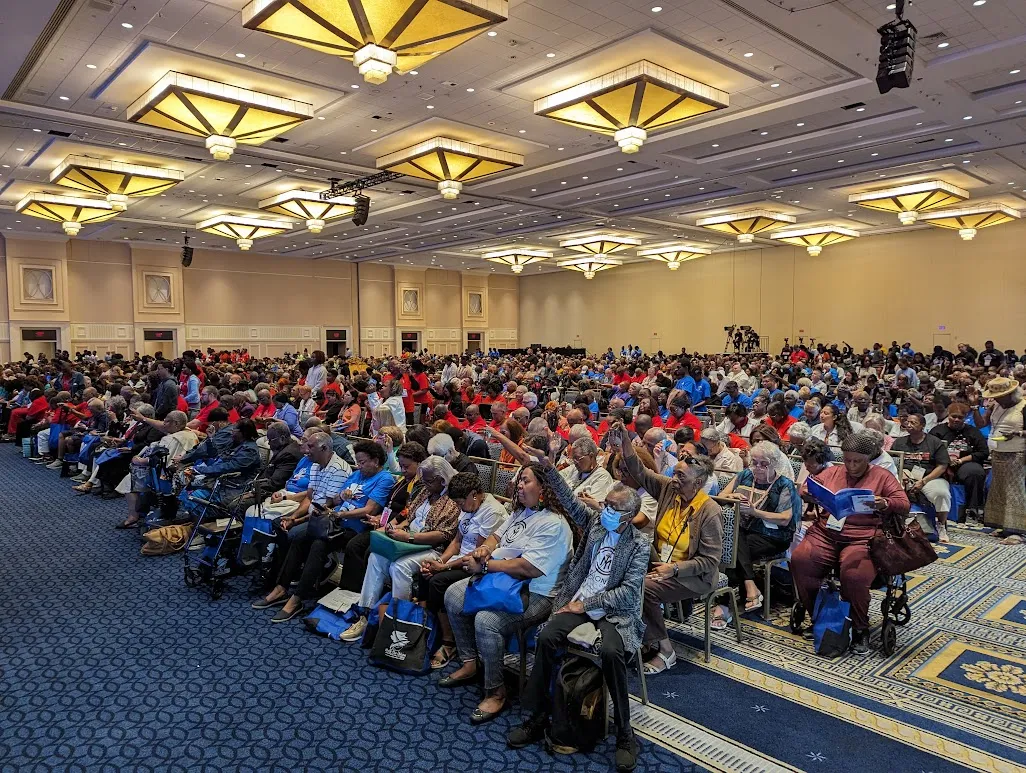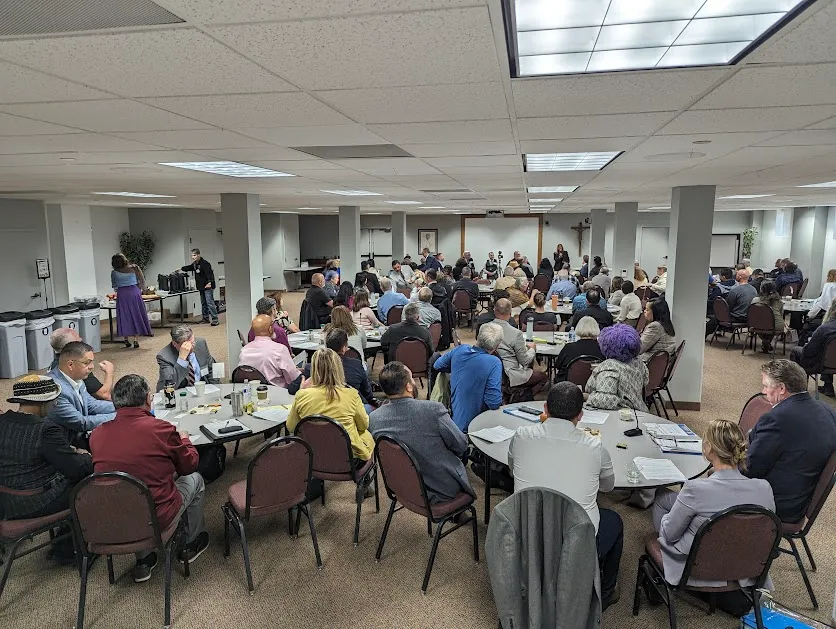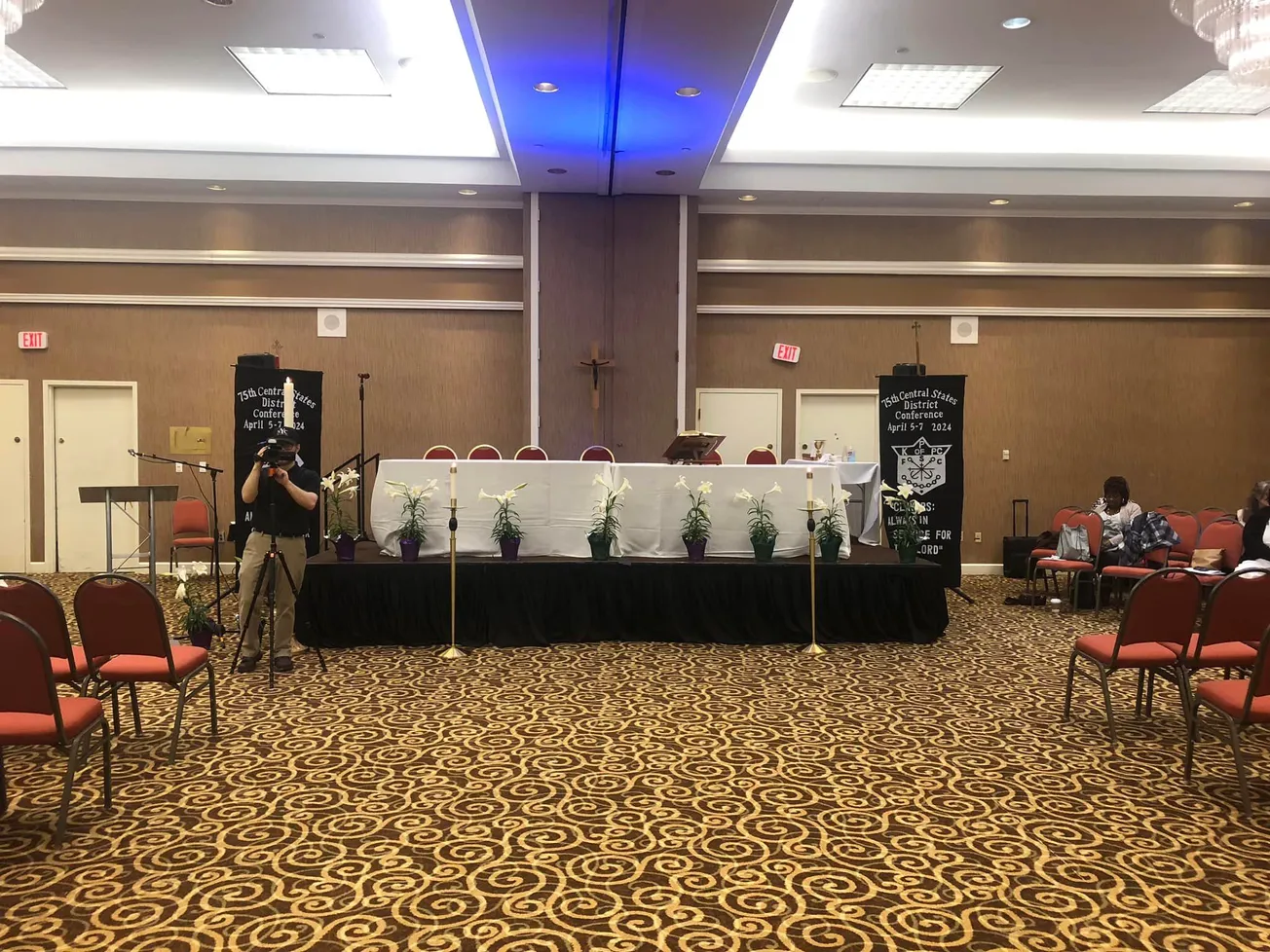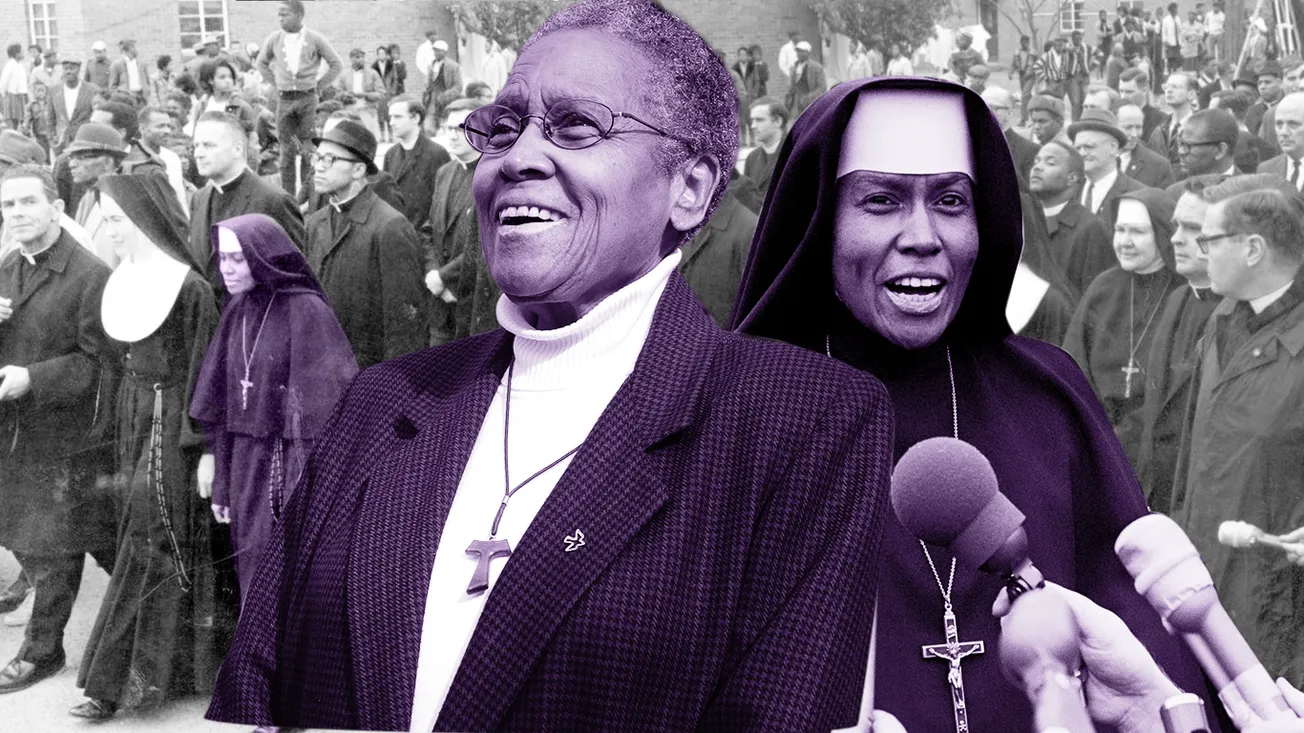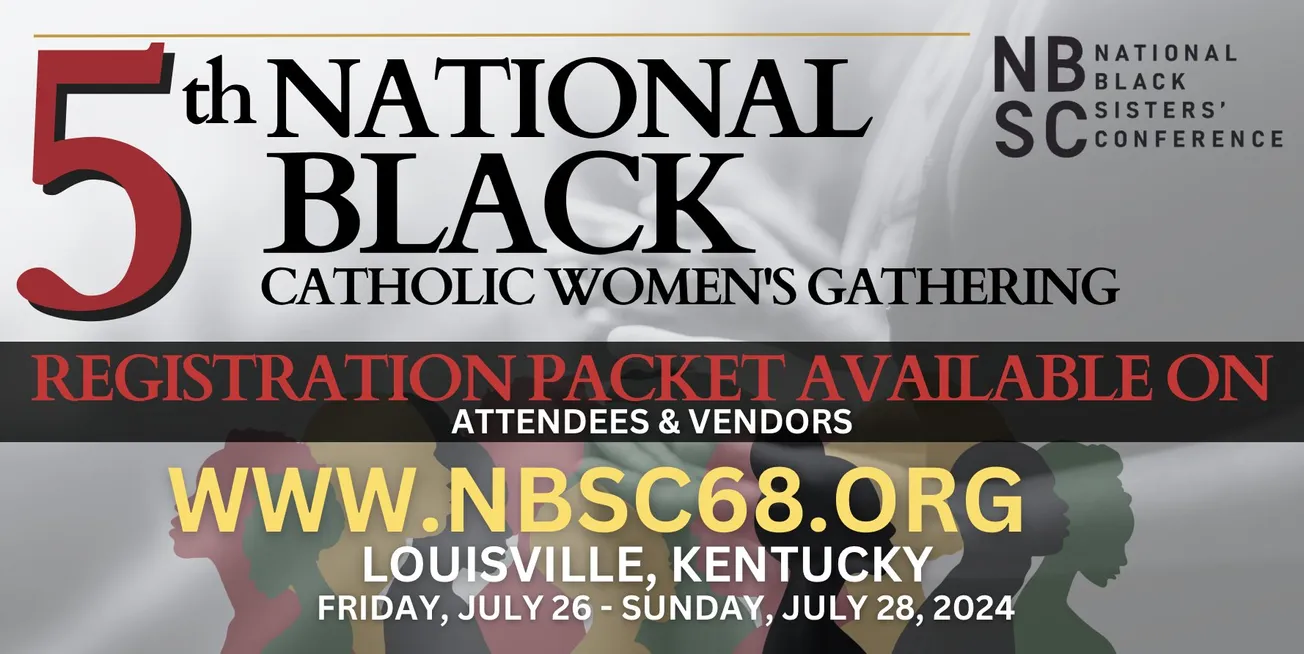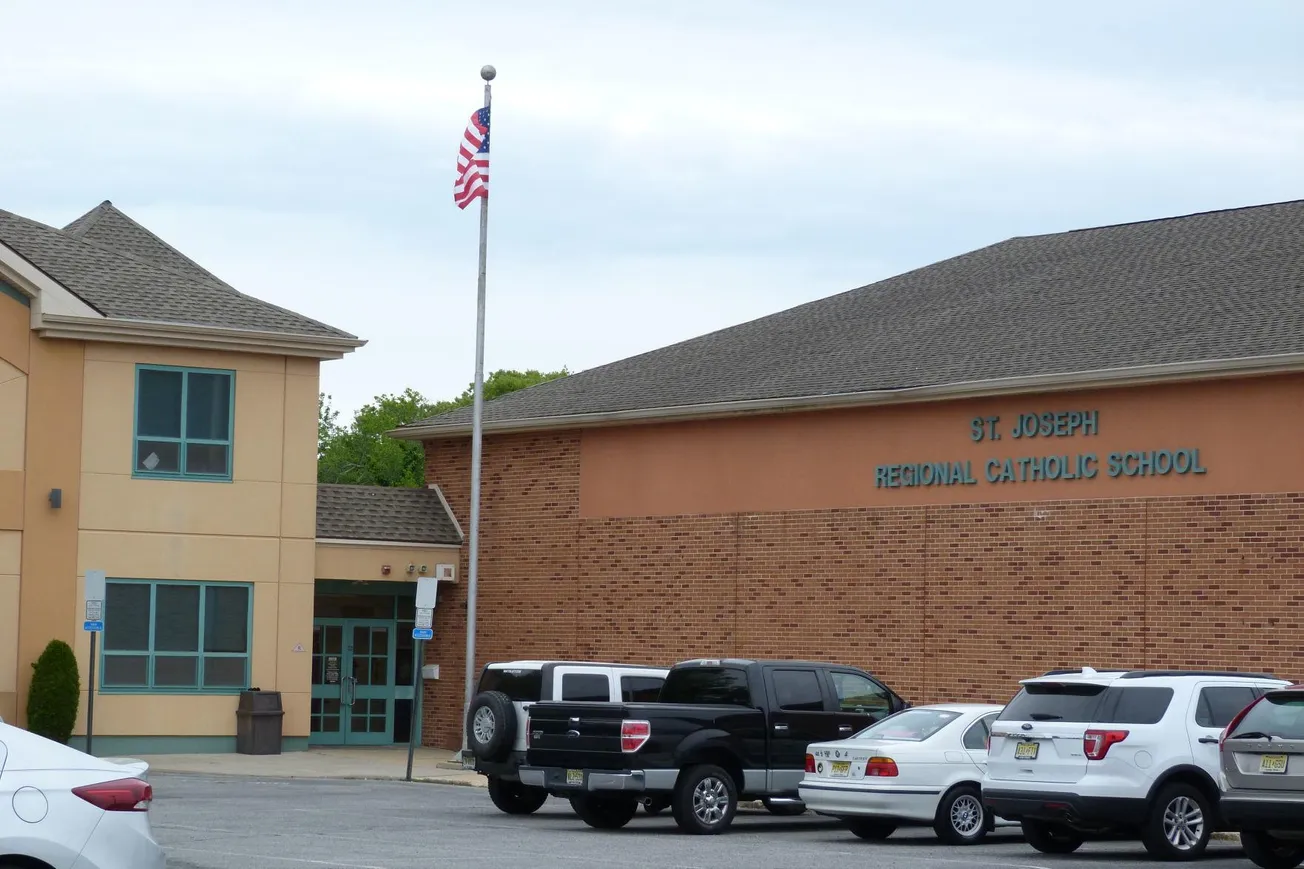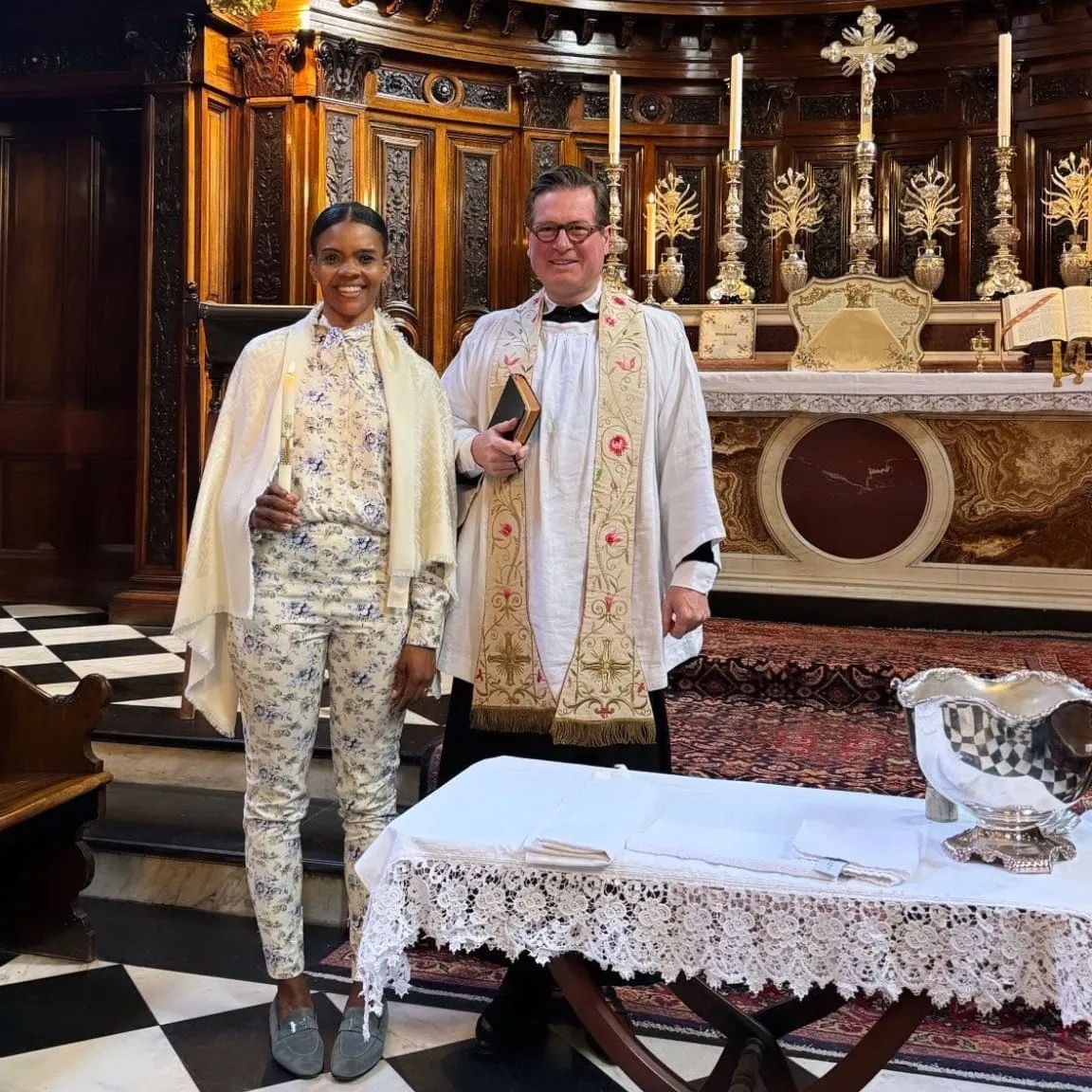The latest National Black Catholic Congress (NBCC) has concluded its festivities, fellowship, and fraternal dialogue, having gathered thousands from around the country for half a week in southern Maryland—near where Daniel Rudd first inaugurated the Colored Catholic Congress movement some 134 years ago.
The event was the first since 2017, the result of a one-year delay due to the COVID-19 pandemic, which ravaged many Black Catholic communities. For those who remain, the extra year off fostered an increased hunger for an NBCC gathering in the wake of various national and ecclesial scandals, movements, and triumphs.
Since the NBCC’s most recent gathering, the very idea of authentic Black history has come under attack in various legislative bodies around the country—including Florida, where the most recent Congress was held under the theme of spirit-filled justice. This year, presenters and attendees focused on the future: “Write the Vision: A Prophetic Call to Thrive.”
The struggle for Black thriving is not unique to the Black Catholic community, of course, and the national temperature shows that clearly enough. But insofar as African Americans and their allies in the Church are in need of revival, refreshment, and a renewed challenge to be all that they can be, the 2023 Congress was, for the most part, right on time.
Among the various challenges presented was that of the youth, which the Black Catholic community hemorrhages at a remarkable rate, according to recent research. Some voices at the Congress made a point to bring this crisis to the fore.ᅠ
“The Church doesn't always feel like a welcoming place for young people,” said Ali Mumbach, a Howard University graduate student and one of the relatively few young adult presenters during the NBCC gathering this year.
Her comments came during a Friday presentation she co-led with Bishop Emeritus J. Terry Steib of Memphis on the Black Catholic bishops’ 1984 pastoral letter “What We Have Seen and Heard” and how to interpret and apply it in the 21st century.
“I know that there are other young adults who have speaking and other roles this weekend, but we need to not only do it at the big events. We need space for young adults in the parish and at the diocesan level as well,” she added.
Ali Mumbach of Howard University and the Archdiocese of Washington presenting here at the National Black Catholic Congress on the sociological trends affecting young Black Catholics.
— Nate Tinner-Williams (@natemup) July 21, 2023
She is co-leading the session with Bishop Emeritus J. Terry Steib of Memphis.#NBCC13 #NBCCXIII pic.twitter.com/t5iMfxXd94
Youth participation in the Black Catholic community was indeed a matter of concern at the Congress, not just among participants but in the functions of the gathering itself. Yes, there was a youth track during the Congress. Yes, some young adults were included as presenters, like Mumbach, but the overall event skewed toward the elderly and reflected the Church’s ongoing struggle to retain young Black members. A vision for the future of Black Catholicism must be written, yes, but by whom?
Bishop Jacques Fabre-Jeune, CS of Charleston, during a homily at the Saturday afternoon Congress Mass, shocked many in the thousands-strong assembly when he called to the stage a group of youth track participants and directly called out an elephant in the room.
“First of all, I want to ask for your forgiveness, because in our liturgies, we don't take you into account. Look at this choir here. Do we see any of your people? Ask them why,” he said, pointing to the dozens of (mostly elderly) men and women seated just a few yards away, preparing to sing the liturgy’s offertory.
“Did [the liturgy organizers] ask you to read? Ask them why. In our liturgies, do we put music that you like?”
Ironically enough, the liturgy coordinator for the week was himself a young adult priest, Fr Ajani Gibson of New Orleans, but who made what decisions and why is perhaps for only God to know. (Fabre-Jeune’s comments may have hit a nerve, though, as Sunday’s closing liturgy for the Congress featured a young adult soloist and two young adult lectors.)
"In our liturgies, we don't take you into account. Look at this choir here. Do we see any of your people?"
— Nate Tinner-Williams (@natemup) July 22, 2023
Bishop Fabre-Jeune of Charleston addressing the youth—and the elephant in the room—during his homily this morning @ the National Black Catholic Congress.#NBCC13 #NBCCXIII pic.twitter.com/bUZPoaM138
The inclusion of women also represented the NBCC’s stark contrast from the Rudd era, when his short-lived Colored Catholic Congress was an all-male affair. In Maryland, I couldn’t help but notice that the NBCC—headed by a female executive director in Valerie Washington—hosted a 3,000-strong gathering with a female emcee (Archdiocese of Washington communications chief Paula Gwynn Grant), female music director (local Catholic music minister Lynne’ Gray), and a crowd that seemed mostly composed of women as well.
Still, the spectacle of Black priests, deacons, and bishops reigned supreme, as at Congresses of old (under Rudd and since 1987). This year’s was perhaps more grand than ever, including an African-American cardinal—an NBCC first—in Archbishop Wilton Gregory of Washington. Admittedly, the gargantuan, joyful processions of clergy at each daily liturgy were noteworthy, but they did seem to give short shrift to the consecrated women in attendance. I never did find out where (or if) they were specially seated.
Immediately after Mumbach’s session on Friday, I attended a priests’ panel on the joys and challenges of being one of God’s sacramental ministers, composed of six young African-American men who pastor communities in every corner of the country. They recounted discursive experiences of discernment, displacement, discrimination, and the duty of their call that keeps them striving for “Black excellence,” as they have humorously dubbed themselves as a friend group over the years.
I wondered, however, why there was no corresponding breakout session on the experiences of young (or any) Black Catholic religious sisters. A few participated in panels on a variety of topics, but I would have hoped that their unique perspective could have been shared as a group like the men. After all, several of the men on the priests’ panel testified that they were formed in their youth by none other than consecrated Black women.
The priests panel at the National Black Catholic Congress features a half-dozen clerics, all under the age of 40 (to my knowledge).
— Nate Tinner-Williams (@natemup) July 21, 2023
Though they hail from one of two states, they serve in Chicago, Los Angeles, Detroit, New Orleans, Washington, and Baton Rouge.#NBCC13 #NBCCXIII pic.twitter.com/C0pHqDOxBH
Though all of the keynote speakers at the Congress were men, the Saturday morning address from Dr. Omékongo Dibinga called attention to the various national crises of justice, as well as the need for Black Catholics to know their worth in a time when their history is called into question. During his rap-infused, socially conscious speech, Dibinga excoriated the recent anti-Black public education curriculum changes in a number of Republican state and local legislatures—one of the only explicit mentions of politics during any of the NBCC plenary sessions. I felt it was much needed, and the crowd seemed to agree, roaring with applause.
Another eminently encouraging note, though, was an apparently impromptu vocations altar call conducted by the Mass celebrant on the final day of the Congress, Auxiliary Bishop Roy E. Campbell Jr. of Washington. He called forward anyone discerning a call to the priesthood or religious life, and several individuals—ranging from elementary age to twenty-somethings—came forward to be prayed over by the congregation’s thousands, whose extended hands were quite a sight to behold. It was by far the most unified instance of the 2023 Congress reaching out to young people, and I hope it will bear fruit.
From my vantage point, the Congress this year was less an attempt to accomplish anything out of the ordinary than a bid to return to normalcy, to something of a model of yesteryear, when the Congress (under Rudd) was a lay movement seeking change in the Church and society by means of fortified national witness. That was something new to the Black Catholic community in the late 19th century, and something still very much needed today.
Now, after decades of national Black Catholic justice work, including a Black Catholic Movement that spurred the revival of the Congress in 1987, what has been “seen and heard” nationally—to borrow a central phrase from the Black bishops’ 20th-century encyclical—must be revisited, tweaked, and some things even discarded. As it is, the inclusion of more diverse voices in the modern NBCC has moved forward, but perhaps not quickly enough.
As such, the 2023 Congress, which comes at a time of crossroads in the American consciousness, struck me as a success and as insufficient all at the same time. As the NBCC organizers circulate a survey to participants to formulate their newest 5-year “Plan of Action,” I suspect that similar feedback will feature strongly.
Nate Tinner-Williams is co-founder and editor of Black Catholic Messenger.


